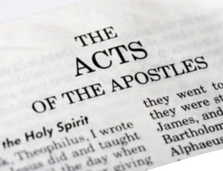 I have always been drawn to missionary stories. As a young Christian, it seemed, I read one or two a month. At that time, I thought I’d be somewhere overseas . . . ending up in some prison somewhere or in an unmarked grave in some distant jungle. I prayed, often—really, all the time—“Here I am! Send me.” [Which is, by the way, part of our text this morning, if you take the immediate context of the original OT Isaiah 6 quote in our Acts 28 text seriously--well, I certainly do). I prayed, “Send me.” God never did. Over there, anyway, to some distant shore or jungle. Didn’t have the privilege to reach the unreached, somewhere difficult, somewhere dangerous for the Lord. Until—until God, surprisingly, late in life, called me to the Hill. Sure. Not a foreign field. But a mission-field, nonetheless. Perhaps even more difficult in some ways—and at times, as dangerous. Early Wednesday mornings, Dr. Doug Bruce (an elder of CPC New Haven, our anchor church) and I would walk around the Hill talking and praying before he went to his office at the Hill Health Center. On one walk he told me he had been on the foreign mission-field and added, “What you have here in the Hill is just as, if not more, difficult as any mission field overseas.” Recently I have picked back up reading missionary biographies. In particular two have impacted me: John Paton, missionary to head-hunters of the South Pacific, and Amy Carmichael, missionary to orphans and the unclean of Southern India. John Paton (late 1800s) was a Presbyterian missionary to the New Hebrides headhunters of the South Pacific islands. Once Paton dared one of the chief priests to prove their gods by placing a death curse on him. The failure of their curse brought support for his ministry from some; murderous ambushes from others. Paton’s story (and it didn’t hurt that he was Presbyterian!)—his story was encouraging to me because it was impossible . . . headhunters, lost in time, ruthless, godless, some of the worst on the known planet. As I read Paton’s autobiography, I could not help but hear Paul’s words in 2 Timothy 2:10: “Therefore I endure everything for the sake of the elect, that they also may obtain the salvation that is in Christ Jesus with eternal glory.” [Written in Rome by the way, where our Acts 28 scene takes place. Not a coincidence.] Then, there is Amy Carmichael, died in 1951, who opened an orphanage and founded a mission in Southern India . . . and she hated fundraising . . . well-known for hating it too. She refused to paint a successful picture for her patrons, eschewed hitting all the sweet spots in telling stories that would provoke her supporters to continue giving. Someone eventually talked her into doing some support-raising and when she did, she said: “. . . we have tried to tell you the truth—the uninteresting, unromantic truth . . . The work is not a pretty thing, to be looked at and admired. It is a fight. And battlefields are not beautiful.” So, you’re finishing up the Acts of the Apostles. Now you know the story well, maybe even excited by it, motivated . . . we admire it . . . we want that! As David Wells of Gordon-Conwell Theological Seminary once wrote about the Acts of the Apostle: “We are impressed . . . impressed at how the disciples got the job done . . . we see the awe, we feel the coming of that power like a tidal wave sweeping all before it . . . If only our times were like theirs . . . They were accused of turning the world upside-down . . .” We want that! Yet, let’s not get sucked into admiring the scenes and stories in Acts . . . it . . . using Amy Carmichael’s words . . . it isn’t pretty, not a thing to be looked at and admired. Luke didn’t hold back, didn’t paint a rosy picture. He has presented a battlefield and a battlefield is not pretty. It is an impossible task. It is messy. It is dangerous. So, at the end of Acts, we have Paul in Rome. What happens to him afterwards, we simple do not know. Only guesses. Did he eventually make it to Spain? We know he wanted to from his Letter to the house churches in Rome. Was he eventually executed? We do not know. What we do know is how Luke chose to end his 2nd volume—he could have chosen any ending . . . Paul standing before Caesar would have been very cool. But this is his finale: a scene where some believe, some disbelieve, there is an Old Testament quote of judgment, a turn to the dirty, rotten-goiim—Gentiles—and, those last words: Paul “. . . welcomed all who came to him, proclaiming the kingdom of God and teaching about the Lord Jesus Christ with all boldness [openness] and without hindrance” (28:30-31). All openness and without hinderance. Through our text—the final scene in Acts—I’d like to ask: what does Luke want us to know as he closes his second volume known to us as the Acts of the Apostles? I. Luke wants us to know that we carry on Jesus’s ministry--he ends where Jesus ends in the Gospel of Luke II. Luke wants us to know some will believe and some will disbelieve III. Luke wants us to be clear on the purpose of Acts: All boldness and without hindrance So, we begin with Paul in some rented quarters somewhere in Rome—a place where Jews and Gentiles would have easier access to Paul at the same time. Probably some apartment near the West Bank of the Tiber River. This would have made sense. We can’t say for sure, but this would have been a logical and reasonable place—where we know most of the Rome house churches were and the place where Jews and Gentiles mingled a little more openly in Rome. This would have been the entrance place for most immigrating to Rome, filled with relocating Jews, barbarians (i.e., non-Romans and non-Greeks), and the poorest of Rome. Paul was awaiting trial, to stand before Caesar. He was under house arrest, but wasted no time. He “. . . called together the local leaders of the Jews, and when they had gathered, he said to them . . . I was compelled to appeal to Caesar . . . For this reason . . . I have asked to see you and speak with you, since it is because of the hope of Israel that I am wearing this chain . . .” (vv. 17, 20). So, what does Luke want us to know through his carefully crafted, to the point, and a little mysterious final scene in his Acts of the Apostles?  I. Luke wants us to know that we carry on Jesus’s ministry: We shouldn’t miss the link between Luke’s ending here in Acts 28 and the end of Luke’s Gospel and, as well, the beginning of Luke’s Acts of the Apostles: Here at the end of Acts: When they had appointed a day for [Paul], they came to him at his lodging in greater numbers. From morning till evening he expounded to them, testifying to the kingdom of God and trying to convince them about Jesus both from the Law of Moses and from the Prophets [Just as Jesus did at the end of Luke’s Gospel] Now recall the end of Luke (24:44-46): Then [Jesus] said to them, “These are my words that I spoke to you while I was still with you, that everything written about me in the Law of Moses and the Prophets and the Psalms must be fulfilled.” [It is like Luke is, at the end of Acts, saying, “Look, see it’s been fulfilled . . . but now carry on with the fulfillment.” And to make the link even more obvious—Luke bookends Acts with “the kingdom of God” (1:3): “[Jesus] presented himself alive to them after his suffering by many proofs, appearing to them during forty days and speaking about the kingdom of God.” Remember what we just read from Acts 28: Paul kept testifying to the kingdom of God. Here we have it, Luke’s ending, a deliberate crafting of a scene to bring the listener/reader full circle back to the beginning . . . it is where Luke began . . . and where Jesus ended in Luke and in Acts 1. You see Acts (hopefully I’m not ruining what you’ve learned from your pastors in this series on Acts)—Acts isn’t just about embedding Christianity in history (like it’s a history book of sorts), not at all, more so, embedding history in the unfolding and unstoppable inauguration of the Kingdom of God . . . Luke’s 2nd volume, Acts as a whole—this is what it looks like for Jesus to be raised from the dead; this is what it looks like for Jesus to be ascended to heaven: impossible and unstoppable. This is the work Jesus began to do and teach (Acts 1). . . we are faithful to the kingdom of God when we continue in this work, work that Jesus began to do . . . and what is this work? This work is the unfolding and spreading of the gospel—geographically and culturally . . . that’s what Acts presents and that is exactly how Luke ends his second volume. Geographically, this is Luke’s obvious outline—(back in 1:8) witnesses in Jerusalem, then Samaria, and then the ends of the earth—here in Rome at the end of Acts, but probably “ends of the earth,” biblically, are the nations . . . and that is what we have here in Luke’s second volume . . . what Jesus began (i.e., the first volume, his Gospel), now unleashed by the ascension of Jesus and the coming of the Spirit—and it’s probably why Paul is left alive in the narrative and most certainly why Luke closes with Paul turning to the gentiles, welcoming “all who came to him, proclaiming the kingdom of God and teaching about the Lord Jesus Christ with all boldness and without hindrance.” With all boldness (openness, a better word) . . . all openness and unhindered. But also, culturally. Jew-Gentile. Obviously a theme throughout the New Testament, but in Acts it is THE movement in the narrative—and this is how Luke ends: some Jews believing, some disbelieving, and the Gentiles listening. Amazing. Some Jews believed and this would have placed them amid Gentiles turning to the faith . . . this is in the background here . . . a mingling of two polar opposite ethnicities becoming family but it would have been crazy for Jews to be fellowshipping with Gentiles . . . that’s what got them in trouble with God in the first place . . . reputations would have been ruined, marked as unclean, banned from synagogue and temple . . . destroyed families, made children orphaned from the community . . . put family and friends at risk . . . there is something on the ground here, and not just theologically . . . a real mess . . . a not so pretty battlefield for believing Jews . . . but there is even more ethic diversity among the bigger category of Gentiles, including class, females, slaves and legacy families, even children . . . a mix that would have been even more culturally crazy . . . As Paul puts it in Romans (in Rome!): Greeks, barbarians, the wise and the foolish (1:14) . . . these are demographic categories similar to how we use demographics today: the reference to “Greeks” rather than “Gentiles” for Paul in his Letter to the house churches in Rome points to elite-Greeks (the cultural somebodies of Paul’s day and in real tension with those who were Romans—Greeks were the original Latins), not simply Gentiles in a general sense: barbarians point to immigrants, non-Romans, slaves from all over the empire, and any non-citizen, including Jews . . . and the wise and foolish are the educated and the uneducated (literally the haves and have-nots of Paul's day). This is actually the movement Luke presents to us—this is what we, the church, CPC in The Hill, CPC Fairfield, are caught up in . . . this movement of the Spirit that extends to all people, to crossing every cultural and social barrier . . . from the Samaritans (half Jew-half Gentile) to the first recorded individual conversion in Acts, the Ethiopian Eunuch to some Athenians to the conversion of Cornelius . . . to the Roman jailor and his household . . . and at the end, this is where Luke leaves his story with for us to hear . . . the last word: Continue to do this work that Jesus began . . .  II. Luke wants us to know some will believe and some will disbelieve: Let’s hear the text again: And some were convinced by what he said, but others disbelieved. And disagreeing among themselves, they departed after Paul had made one statement: “The Holy Spirit was right in saying to your fathers through Isaiah the prophet: “‘Go to this people, and say, “You will indeed hear but never understand, and you will indeed see but never perceive.” For this people’s heart has grown dull, and with their ears they can barely hear, and their eyes they have closed; lest they should see with their eyes and hear with their ears and understand with their heart and turn, and I would heal them.’ Therefore let it be known to you that this salvation of God has been sent to the Gentiles; they will listen.” Interestingly, the opposite of the Isaiah quote. The Isaiah quote is a idol-taunt, that is, the people of Israel had begun to act like the nations around them and, thus, could no-longer hear God’s voice, hear His word--they had ears but could not hear. Yet, now, in the preaching of the gospel, Gentiles hear! It is the twist in this movement. It is the narrative application we are to hear. Now, Pastor Chip, that’s pretty obvious: some will believe and some will disbelieve . . . yet, that’s not the obvious Luke is after; but, it’s the mission we are to hear, the gospel movement itself, the increase, the gospel’s spread, if you will . . . this is what the church needed to know, needed to accept and deal with, and it—some will believe, some disbelieve—teaches us what our role as church is . . . that the word of the gospel is a word of judgment that exposes our hearts and is also the very means of grace that can save us, save your neighbors, save those in the Hill, save those in Fairfield: some will believe and some will disbelieve. Paul’s use of Isaiah 6 to summarize or “proof text” the gospel, if you will, is to draw the church’s attention to the fact of Hard and Idolatrous Hearts . . . we all, every one of us, everyone we encounter in life, everyone we engage with the testimony of our life as a Christian, everyone we share our faith with has a hard heart and is full of idolatries—everyone. A hard heart and full of idolatries. And this is what Jesus began to do . . . recall his use of Isaiah 6 (Matthew 13; Mark 4) to explain why some didn’t respond to the parables and some did: Luke wants our testimony to imitate Jesus . . . . Paul’s sure did . . . and this has been the story of Acts. This is what it means for Jesus to be ascended to heaven and the gospel to be unleashed to the ends of the earth . . . we cannot control it (the gospel), but it is still unstoppable . . . and it is the only thing—the gospel, the sharing (28:31) of the kingdom of God and teaching about the Lord Jesus Christ—that will effectively call God's elect, who have hard and idolatrous hearts. Isaiah 6 is a full text, one of the top five most quoted OT texts in the NT. Isaiah 6 is the gospel in Old Testament language or better, the gospel is the fulfillment of Isaiah 6. The word of the gospel is a word of judgment that exposes our hearts (as does Isaiah 6) and also a means of grace for repentance (also, what Isaiah 6 does as well). Paul (really Luke) isn’t using the Isaiah 6 taunt just to explain why some will believe and some will disbelieve. It is used to say it is out of Paul’s hands, out of our hands . . . but it—the gospel—is the only thing that can change hard hearts full of idolatries (the impossible) so that it may increase, spread, demographically and geographically (the mission). Let’s pause for a second to fathom what we have been called, instructed, commanded to do here. Paul’s use (well, Luke’s record of) Isaiah 6 is the only time that the introduction to the taunt is used. This implies to me that Luke has a slant, a nuance—the other times, as Jesus used the reference in the gospel, it was about the audience, the hearers, why their hearts were hard, why they didn’t respond . . . here however, we get the command: Go and say: “Go to this people, and say, “You will indeed hear but never understand . . .” Not just an explanation but also a command—not just an explanation as to why people have heart hearts; but a command to go speak to hard hearts. This tells me that we are to infer that Luke is (narratively, with the whole story actually, in summary here in Acts 28) telling us to speak to hard hearts—speak to impossible and messy idolatrous hearts. That’s why George Paton could go to the headhunters and Amy Carmichael could be realistic about the messy battlefield . . . that’s why we go do the impossible in the Hill and right here in Fairfield. This is where we say, “Send me!”  III. Luke wants us to be clear on the purpose of Acts: All boldness and without hindrance: It would be unfair to review all of Acts here—but still this is what Luke is actually doing with his conclusion to his second volume (our text). He is drawing us to all his hints along the way, the movement, the spread of the gospel with impossible odds . . . even with one of the heroes of the story not having done the big thing . . . You’d have thought the big ending would be Paul before Caesar. That has been, narratively speaking, plot-wise, what the reader has been moving toward. But still, we . . . were . . . given some hints that Paul’s tack toward appealing before Caesar was off a little . . . even with warnings not to do it, yet still Paul uses his bought and paid for Roman citizenship to appeal to Caesar . . . (whether Paul was right or wrong isn’t really Luke’s concern, but that it happened and fits his inspired purpose for writing) . . . we travel with Paul through danger, ship wretch, and imprisonment all the way to Rome for that final show down, Paul vs. Caesar . . . this will be so cool, we think, anticipating that final scene . . . this is great American film-making! Paul’s journey is not unlike Luke’s portrayal of Jesus heading to Jerusalem to be put to death. We’re all prepped for Paul to stand before Caesar . . . but no . . . wait . . . what? That’s not what happens. This is not the ending we were prepared for . . . it is a letdown . . . we didn’t get what we paid for . . . not a word about Paul and Caesar . . . we are left with: He lived there two whole years at his own expense, and welcomed all who came to him, proclaiming the kingdom of God and teaching about the Lord Jesus Christ with all boldness and without hindrance (Acts 28:30-31) What we are left with is a scene that summarizes what Luke has been narrating all along . . . the movement and spread of the gospel—culturally, Jew-Gentile and geographically (finally in Rome) . . . This is it: the message is what’s important and what was unleashed when Jesus ascended to heaven and the Spirit was poured out on His church continues . . . the apostle Paul left in rented quarters, no indication of his big day before Caesar. We are left with simply with what Luke has been driving at all along and throughout his story: the gospel is the Big Thing . . . the unstoppable increase of the gospel. We see this “increase,” this movement all along—there are references in Luke’s narrative, that, at impossible moments the word of the gospel increases. Luke connects the end of his story to the progression he has embedded throughout his narrative in Acts.
A clear repetition that is meant to reenforce the obvious geographic and cultural movement of Luke’s purpose and message: at pivotal points in the story where the gospel and the fledgling church were in danger, under some form of threat, we hear that the word of God (the gospel) or the church increases. The story goes: there is fellowship issues among the clashing cultural members of the church (Acts 6); there is a hindrance in getting the gospel to the Gentiles: the zealous, Christian murdering Saul. But here God converts this enemy of the Church, making him the very instrument that would bring the Gospel to the Gentiles (again affirmed by Luke’s ending in chapter 28). But, again, hindrance occurs when the Church doesn’t want Gentiles, outsiders, to receive full fellowship. But, God converts Cornelius in a mighty wind and the mission to the Gentiles is off and running (Acts 10). Then Paul and Barnabas, the two great church planters, are split up because of personal conflicts. But the mission does not stop! Kill a few. Jail them. Beat them. Divide them. But, this is God’s thing—nothing will stop it. Salvation is for all people, to the ends of the earth. The Gospel will not be ultimately hindered. So what should we walk away with by Luke’s story in light of his ending? What does this inspired ending of Luke’s account of the young church call us to do . . . to believe . . . to be obedient in following Jesus? What is our church to do? What do I want to leave with you in light of Luke’s final scene of his second volume? First—we can’t control history . . . no matter who we know, what power we think we have (even voting) or what platforms we have . . . or want to have (like standing before Caesar). We can’t control history. The recent COVID-19 shut down should have demonstrated this to us, we’re not in control of history. But, we are to believe what Luke has presented, namely, that God’s plan is unstoppable. Second, the church can handle—God can handle—whatever history throws at us . . . the church . . . the gospel will be unstoppable even when what we do is impossible, where we minister is impossible . . . I have been reading and rereading the Acts of the Apostles these past few weeks, while at the same time watching the images and listening to the stories coming out of Ukraine and of the Ukrainian church. This has made me think that the life of the church in Acts and the lives of its apostles and evangelicals and pastors are more like the life of the church in Ukraine (and recently, similarly, the church in Afghanistan) than the life of the American church as we experience today. Christians, churches, miss the unstoppable impossible missional task of God in Christ for we tend, like our culture, to seek the possible, the more likely to be successful, the least dangerous to us (personally or for our family). Luke’s Acts of the Apostles does not present such an option. Luke’s second volume, the Acts of the Apostles, presents a messy, impossible, and a dangerous story of the birth of the church, the geographic and cultural spread (increase) of the gospel, and the lives of those who participated in God’s missional task, the unfolding of the fulfilment of what God had promised. As Amy Carmichael said, God’s missional task “is not a pretty thing, to be looked at and admired. It is a fight. And battlefields are not beautiful.” This is what we choose to be caught up in. We choose to be a part, even a small part, of the unstoppable impossible (and potentially dangerous) missional task of the gospel. And, please if we are to hear the Acts as God’s word to us, we cannot escape that what we do as church is dangerous—that’s what Acts presents, a messy, dangerous battlefield. Continue Jesus's ministry, God’s unstoppable, impossible mission! Join Jesus's unstoppable, impossible mission! *I originally preached this sermon, as a guest in the pulpit, at Christ Presbyterian Church Fairfield in Fairfield, CT as the conclusion to their Sunday series through the Book of Acts. The sermon was also record (see below): some scrolling forward is necessary.
1 Comment
IV. The “Inner [One New] Humanity” Temple (aka "Inner Man") and the Revelatory Nature of the Church There are enough hints, allusions, word plays, and inferences to draw the conclusion that “the saints who are at Ephesus” (Eph 1:1) are indeed God’s temple (2:18–22; 3:6, 8–10, 14–19) in contrast to the plethora of pagan temples in the region and who are the fullness of God in Ephesus et al. They are God’s temple, with Messiah Jesus as its cornerstone (2:20), a building created and being built, not by human hands (2:11) of stone, wood, and metal, but by God’s words, through his apostles and prophets, made effective and filled with his Spirit, ever expanding, right there in (a) place (and the next place and then the next, etc.). The church (a local church) is being built as a house-temple to reveal the mystery of God’s reconciliation work in Messiah Jesus (Eph 3:5–10; cf. 1:9–10; 2:10). The reconciling work of the cross becomes the reconciling of flesh (i.e., people and systems and institutions, 2:11–16; 3:10; 6:10-15) in (a) place; the deconstructing of social and institutional powers, heavenly and earthly (cf. 1:10). The local church, as God’s temple where his fullness is housed (dwells), is to be a revelation of God, his mystery in Messiah. Set in contrast to contemporary (ANE) “temple” life, a corporate inference to Paul’s “inner man” seems most reasonable. In the previous paragraphs (Eph 3:1–13), Paul frames the following prayer (vv. 14–19) by, first, explaining the nature of his ministry and of the church as the revelation of the “mystery of Christ,’ which he already had alluded to as the “one new humanity” (2:15c), the incorporation of the Gentiles into church(es) (i.e., the promises of Christ through the gospel,” 3:6c). Thus, a fair reading of Ephesians 3 as a whole suggests that the church (a church) itself is a revelation of the gospel. Understanding the polemical temple backdrop to which Paul utilizes, there is further reason to read the revelatory nature of the church (a church) as appropriate to grasp the intent of his Ephesians 3 prayer. In other words, the church (a church) is a “thin place” where the mysteries (i.e., the revelation of the gospel) is revealed. The “thin place” is that sacred space, the place where the unseen mysteries of the heavenlies and the concrete places of the earth touch, cross, meet. A thin place is where one can walk in two worlds at the same time, the two worlds fused together, where the differences can still be discerned. As someone explained: “A thin place is a place where the boundary between heaven and earth is especially thin. It’s a place where we can sense the divine more readily.” This is why Paul prays as he does for the “saints who are at Ephesus” et al in verses 14–19 and offers the benediction in vv. 20–21 concerning ekklesia and all future generations of churches. The “one new humanity” (Eph 2:15c) is the very expression of the temple, the inner sanctuary where God is housed, where he speaks, and is revealed. The “inner man” (more so, the inner humanity) that is gathered in house-temple-churches (literally, in the homes and at the supper tables) are the revelation of the gospel of Christ. The church (more so, a church-gathered) as God’s temple is this “thin place.” V. The Corporate Church Implications: Revelatory Church Growth Outcomes 1. The habits of church life need to move away from the building-centered experience to be the church in (a) place: i.e., non-building-centered outcomes to determine church growth (it is the reconciling element of the cross among people that is being joined together and growing into a holy temple in the Lord, that is being built together into a dwelling place for God by the Spirit (Eph 2:20b–22): God’s new revelatory temple. 2. The habits of church go counter-cultural, moving away from a privatized Christian experience toward a corporate application of what it means to be the church in a place, a gathered-house-temple, with a concrete home (a neighborhood) address, where strangers and unequals (note the reconciliatory aspect I am suggesting) participate as church around a supper table [unlike a building-centered church experience, where neighborhood is absent]. 3. Since the stress is on the inclusion of Gentiles as fellow heirs and fellow-partners with believing Jews, part of the church’s revelation exists, as a gathered-temple/church, to be a visual (flesh of a neighborhood or community) that demonstrates reconciliation outcomes (based on Ephesians 2:11–22 and 3:1–13). 4. Church growth outcomes should reflect the realities of what it means to be God’s temple in (a) place: Outcomes measured in the language of neighborhood, reflecting the reconciliation of actual people (i.e., strangers and unequals, etc.). 5. Church growth outcomes should reflect the decision-making that removes barriers to accessing the Father and promoting what draws people into free access to the Father (as opposed to accessing a building). 6. Think cosmologically. Act locally (develop outcomes related to the local neighborhood and wider community).
III. Implications from Solomon’s Temple Dedication and Other OT Temple Texts (B)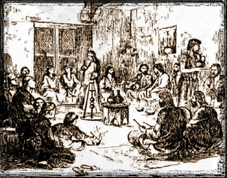 The semantic range of esō (inner), Solomon’s temple, and Ezekiel’s future temple. The sematic range of use of esō (inner) plays a corresponding role throughout the temple building project and in the restoration of the temple as envisioned by Ezekiel.[1] Although the New Testament use of esō as in Eph 3:16c, what is easily noted is that the use of esō, esōtatos, and esōteros is prevalent (widely used) in the 1 Kings and 2 Chronicles, as well as Ezekiel’s vision of the future temple, to describe the construction, design, furnishings, and direction of its structure and temple items. The esō-terms can refer to many parts, entrances, or directions within the temple structure and furnishings, but yet, it should not escape our notice that the inner court and the most holy place share in this words use as well. esō
esōtatos
esōteros
The temple construction and the Solomonic temple dedication prayer have numerous parallels, word-links, and conceptual association with both Paul’s Ephesians 2 “one new man” context and his Ephesian 3 prayer that references the “inner man.” The conclusion and consequence of the temple prayer and building is glory-filling 1. The event or consequence concluding construction of the temple was God filling the temple with his glory (presence, spirit, cloud). Another parallel, actually a type-antitype (an anti-parallel), is the reference that the glory filling the temple prohibited access, which is ironically reversed in the “one new man” and the mysterious consequence of Messiah Jesus’ work referred to in Ephesians 3. These texts indicate the equal and free access to the Father by believing Gentiles and believing Jews. We should see this in light of the redemptive results referred to in Ephesians 1: v. 6, to the praise of the glory of His grace; v. 12, to the praise of his glory; v. 14, to the praise of his glory. The same result occurs in Ezekiel at the conclusion of the restoration of God’s eschatological temple, namely the glory fills the temple.
2. The temple measuring language also finds its way into the Ephesians 3 prayer: see 1 Kgs 6:1-6; 2 Chron 1-5; cf. Ezek 40-47. Ezekiel’s new temple vision There is a strong link between Ezekiel’s restoration chapters (37-48) and the Ephesians 2 “one new man” and Paul’s Ephesians 3 prayer: 1. Ezekiel 43:5 (LXX), καὶ ἀνέλαβέν με πνεῦμα καὶ εἰσήγαγέν με εἰς τὴν αὐλὴν τὴν ἐσωτέραν [And the Spirit lifted me up and brought me into the inner court; and behold, the glory of the Lord filled the house.] The glory of God plays a key role, first in its departure in Ezekiel 1 and, then, in its return in chapter 43. Additionally, in Ezekiel 1 and 8, the prophet’s vision includes his “glimpse of part of the heavenly temple.”[3]
2. Measuring language: The dimensions given in the Ezekiel visions all seem to be God’s heavenly temple rather than a temple in Jerusalem, as Ezekiel 43:12 suggests in referring to “the top of the mountain.”
Ezekiel takes nine chapters to show specific measurements for this future eschatological temple.[4] G.K. Beale recognizes this same connection to the eschatological temple in Revelation 21 (“its length and width and height are equal”) and the measurement language in 1 Kings 5:17; 6:20–22; 7:9–10, even noting the dimensions of the “holy of holies” in 1 Kgs 6:20 ( length . . . and the breadth . . . and the height” of the holy of holies were equal in measurement).[5] 3. The inner reference in Ezekiel’s description of the restored, future temple
4. The dwelling language (not lexical, but conceptual):
5. The glory filled the inner court/temple/house (with an antecedent to the wilderness tabernacle).
The overall effect of the restoration and measuring of God’s people and, as well, his temple is to assure the exiles God will bring about his promises, his remedy for the condition of exile. Beale points out, the “theophany of Yahweh in his heavenly temple was intended to reassure the prophet that the faithful among the exiles were still related to the true heavenly temple, though the old one had been decimated.”[7] Measuring demonstrated surety of the vision and God’s abilityto bring it about. Zechariah 6:11–15 and the future temple. Zechariah 6 combines a wide range of themes found in Chronicles (Kings), Ezekiel, and, as well, Ephesians concerning the (future) temple: The Branch-Son-temple-builder and those “far off” come to rebuild the temple.
Isaiah 11, the Spirit, and Messianic wisdom. Interesting, in Isaiah 11 the Spirit of the Lord rests upon the Branch (Isa 11:2), that is, “the Spirit of wisdom and understanding” (πνεῦμα σοφίας καὶ συνέσεως), a word combination rarely used, is strongly associated with temple-building. The Ephesian parallels should be noted in Paul’s Ephesian prayers (1:10, 17; 3:10). Additionally, “wisdom” and “knowledge” is associated with the design and construction the temple (2 Chron 1:11, 12; 2:7, 12, 13). Paul connects wisdom (Eph 5:13) and Spirit in Eph 5:18, continuing to infer the corporate, local congregation reference to “inner man.” Eph 5:18 is a temple-filling (be filled in Spirit; note the plural) reference, similar as Paul’s prayer that the Ephesian congregation “be strengthened with power through His Spirit in the inner man” (3:16b).[8]
Footnotes
[1] Note the LXX utilizes esō, esōtatos, and esōteros with little lexical difference, save whatever the context is implying. [2] 1 Macc 9:54 (“the inner court of the Temple,” τῆς αὐλῆς τῶν ἁγίων τῆς ἐσωτέρας) [3] G.K. Beale, The Temple and the Church’s Mission: A biblical theology of the dwelling place of God (Downers Grove: InterVarsity, 2004), 337. [4] Jason Eric Beals, “National Restoration and the Divine Dwelling Place in Ezekiel 37:15–28,” Masters thesis (Master’s Seminary, Sun Valley, CA, April 2013), 12. Also see Schmitt and Laney, “Messiah’s Coming Temple.” Also Ralph Alexander, “Ezekiel,” 6:943-96; Cooper, Ezekiel, 349-428. [5] G. K. Beale, “Eden, the Temple, and the Church’s Mission in the New Creation,” J. Ev. Theol. Soc. 48/1 (March 2005) 5-31. [6] An interesting OT text in light of Paul’s words of prohibition (And do not get drunk with wine . . .) and the (likely) temple reference (i.e., πληροῦσθε ἐν πνεύματι, be filled in Spirit) in Eph 5:18. [7] See Beale, The Temple and the Church’s Mission, 337. [8] Also Daniel 2, 7, the heavenly powers, and the whole earth. Christ’s expanded rule over the cosmos exercises authority over both the earth and the heavens: this makes total sense, namely the role of the temples where to illustrate and provide the means to appease both the earthly rulers and the heavenly deities who control the life upon the earth. The reference to “heavenly places” points to a cosmological mission, as Paul’s prayer implies, becomes localized in Ephesus through his body, his fullness in that place. The Daniel 7 “Son of Man” is linked in language and concept to the Ephesians 2 “one new man” (and Dan 7-8 present the one-and-the-many concept between the Son of Man and the saints of the Most High). II. Weighing the Context and the Burden of Interpretation: Individual or Corporate?  Virtually every commentator affirms, without question, an individual referent for Paul’s Ephesians 3:16 phrase “inner man.” For most, with little to no explanation as to how anthropos (lit. man, human being) can be understood as “self” or how esō (inner) is a reference to the inner being (that incorporeal, ethereal, intangible, soul-ish, or heart aspect of the human being); [1] or, there is an immediate assumption, again with no explanation, that Paul has turned his prayer’s attention to the individual Christian—that is, the inner self of the individual believer.[2] Some appeal to similar Pauline expressions (i.e., Romans 7:22; 2 Corinthians 4:16) are typically made, assuming, as well, those texts are similarly individual referents. Nonetheless, given that the prayer as a whole and the surrounding context is highly corporate, the burden of interpretation, then, seems to be on those assuming an individualistic reference for Paul’s phrase “inner man” (ἔσω ἄνθρωπον). Max Turner helps refocus our attention on the corporate nature of Ephesians: Descartes, Enlightenment ‘man’, the Romanticists, Kant, Freud, Jung, and developments since, have placed the major emphasis of personhood on the inner self, the subjective and all-too-readily individualistic pole of experience, the world-interpreting (including ‘self-interpreting’) ‘I’. The first century Greco-Roman world, like so much of the modern Eastern and Southern worlds, was fundamentally different. Their concept of the ‘person’ (as with the Fathers!) is fundamentally much more dyadic, that is, essentially relational and group-orientated. The ‘person’ marks him- or herself by (a) what place she has in the wider society (e.g., her lineage); (b) with which society she is identified (e.g., her ethnos, her city, etc.); (c) his or her upbringing, education and training (under which teachers, involving what skills, and understanding, etc.); and (d) his or her accomplishments, in terms of public deeds, and visible ‘persona’. Within such a cultural setting, introspective and psychologising accounts of the ‘self’ may be expected to be found little more frequently than the proverbial mare’s nest.[3] In other words, Paul, in Ephesians, is helping to revise the church’s mental and social map of their world in that place (Ephesus et al.).[4] As they had experienced before coming to faith in Messiah Jesus, the temples and their experience of the temples revealed the heavenly mysteries and created habits that molded them according to the deities represented in and through the temple; now, however, as God’s temple, they are to do essentially the same, yet now, reflecting God in Messiah Jesus. Their natural “bandwidth” was limited by their previous social and cultural experience. As suggested in the words of Leonard Sweet, “When the root metaphors change, so does everything else.”[5] This seems to be what Paul is after in Ephesians. Paul’s reference to “inner man.” Paul utilizes almost the same exact phrase in Romans 7:22 as he does in Ephesians 3:16. Both are set within prepositional phrases, the only difference is kata (according to is used in the Romans 7:22 text and eis (into) in the Ephesians 3:16 text.
For most commenting on one or both these texts, they are considered the same and simply taken as the “inner person” of an individual. Lincoln has a long discussion and rationale (essentially the only commentator to do so) for taking “inner man” as an individual reference; however, he makes inferences from what he considers relevant Greek- and Hellenistic-world authors concerning the dualistic “notion” of “an inward person” or “the person within the person.” The argument seems to start with the assumption of what “inner man” means (i.e., inner, real self), not whether it actually means inner person; then, Lincoln precedes assuming a dynamic similarity to such Hellenistic writers’ use of other linguistic words and phrases (not the actual phrase, however). Furthermore, without much consideration, Lincoln indicates that the “new man” (Eph 2:15c) and the “inner man” (Eph 3:16c) are not to be equated. Nonetheless, he only cites inferences and concepts of “the inner person” from, what are obviously, platonically influenced dualistic, writers. Yet, there is no exact or even any closely resembling phrase among Greek writers and thinkers.[7] Barring any appropriating from Gnostic or Platonic thought, Paul is, still, unique in forming this phrase.[8] Also, to go with the reading, one must still argue that Paul was offering a Greek understanding of a person within some dualistic framework and not, the natural assumption, from an Old Testament or Hebraic understanding of the referent. The apostle does not draw on any other relevant or traditional language used to describe a human being in this way.
1. In the Ephesians 3 prayer, Paul is entreating God on behalf of the whole church in Ephesus, which is made plain by (a) the repeated plural “you” address, (b) the second person plural verbal expressions, (c) implied by the reference to the “fullness of God” in verse 19, and (d) the benediction call toward the whole church (which I maintain should be heard as local to the Ephesus et al. house-churches rather than some notion of a universal church) in verses 20–21. All components of the prayer are directed at the whole of the church being addressed (vv. 16, 18, 19c), which suggests there is either an exception being made in the reference to “inner man” or “inner man” has, as does the rest of the prayer, a corporate reference. It is the church, which is Jesus’ (earthly) body, that is God’s fullness, according to Paul’s previous description in 1:23.[10] Identifying “inner man” as the individual in Eph 3: 16c would mean Paul has changed the framing of his prayer. It seems more reasonable to retain the corporate thread in vv. 16–19, which would imply that “inner man” is to be understood corporately. 2. The Ephesians 3 prayer parallels both Paul’s previous prayer (1:15–23), which is most certainly addressed to the whole of the church (in Ephesus et al.) and, as well, the affirmations made throughout chapters 1-3 concerning God’s action in Jesus toward the whole Ephesus et al. church. In fact, Paul “reuses many of the words and ideas of his earlier intercession, 1:17–19,”[11] implying a similar focus. For example, in the first prayer (1:14–23), Paul prays that the church would comprehend “what is the surpassing greatness of His power toward us who believe” (v. 19). This has parallel meaning in the Ephesians 3 prayer when Paul prays that the church “be strengthened with power through His Spirit” (3:16), thus allowing a continued corporate focus, which would include the intent of the phrase “inner man.” 3. Other references to anthropos regarding the nature of the church, i.e., the one new man (2:15c; including 4:22–25) in Ephesians fall squarely on, not the individual Christian, but the corporate unity of the new Gentile-Jew co-fellowship, house-temple in and through Messiah Jesus. Furthermore, the pattern of the whole phrase “inner man” as a prepositional phrase mirrors Paul’s “one new man” reference in 2:15c:
4. The reason for the prayer itself (3:14) is seen in the immediate paragraph where the imagery and concept of the “one new man” is apparent: that the Gentiles are fellow heirs and fellow members of the body, and fellow partakers of the promise in Christ Jesus through the gospel (3:6). These are the same words and concepts used to describe the incorporation of the Gentiles as an element of the Ephesians 2 “one new man.” 5. The reference to “glory” (according to the riches of His glory, v. 16b) draws the readers back to the trio of verses (1:6a, 12c, 14c) that are tied to the result of the Father’s action toward and on behalf of the church, namely that all, on account of God’s action in Messiah, through faith, have access to the Father’s presence (2:18; cf. 3:12):
Paul’s trio-reference to God’s “glory” carriers resonance of God’s temple presence (which will occupy are attention later in the essay). The OT is filled with references to Yahweh’s presence either being associated with his “glory” or with “glory” indicating God’s actual presence in earthly space and time. Given Ephesian’s liturgical rhetoric and Paul’s very concrete reference to the church as God’s temple (2:19-22), there is no doubt that the apostle “has drawn on the manner in which the OT writers expressed the divine presence and manifestation of God in the temple.”[13] Paul’s repeated use of “glory,” particularly as the ultimate result of God’s action in Messiah (i.e., to [note into, eis] the praise of His glory, 1:12, 14; cf. 1:6 ), we should, therefore, understand the term “coextensive with the concept of God’s glory filling the temple.”[14] Thus, there is a strong tie to the access to the Father, which is at the heart of the two preceding paragraphs:
This not only links the “inner man” to the “one new man,” it, furthermore, also strengthens the corporate reference of the whole prayer. 6. The three escalating hina clauses in 3:14–19 imply that all the clauses are intended to be taken corporately, that is the prayer is applied to the church as a whole. This is particularly recognized in Paul’s final and ultimate hina clause that contains the requested result and content[15] of his prayer to the Father: that you [the church in Ephesus et al.] may be filled up to all the fullness of God (3:19c).
The phrase “the inner man” comes in the first of three escalating requests; not necessarily three independent clauses, but components that build (i.e., are stacked) or further explain Paul’s entreaty on their behalf. Note the use of corporate language in the Ephesians 1 prayer also ends with reference to the church being “the fullness of God” (1:23b), which seems to be the case here in the Ephesians 3 prayer (cf. 3:19c). The first hina clause, which contains the phrase “inner man,” is a request that the whole of the “saints in Ephesus” be strengthened with/in power that results in Messiah dwelling in their hearts as gathered-church(es). The “dwelling” seems to imply the need for “inner man” to be a corporate reference, reflecting what it means to be the fullness of God in Ephesus. 7. The last of the hina clauses, the final request--that you may be filled up to all the fullness of God, 3:19c—draws from Paul’s first church reference to “fullness” in 1:22-23: And He put all things in subjection under His feet, and gave Him as head over all things to the church, which is His body, the fullness of Him who fills all in all. It is clear that the earthly body of Messiah, the church, is the fullness of God.[17] The whole prayer (3:14-19), that is, its content (i.e., the choice of words and imagery), is to request that the Father on behalf of the “saints who are at Ephesus” (1:1) to realize who they are in Ephesus as gathered-church, God’s one new man (i.e., one new humanity) the house-temple, God’s dwelling place; thus, they are to know/comprehend/experience the fullness of God (as the one new humanity, the inner man). Additionally, the “one new man” is the house-temple of God, that is the dwelling place of God, which has a conceptual reference to Paul’s “fullness” references elsewhere. 8. Paul prays the Ephesus church is strengthen in the inner man “through His Spirit” (3:16b). All references to the actions or person of the Holy Spirit situated in Ephesians are corporate references to church (cf. 5:18). Paul’s “inner man” would be the sole exception if it were a reference to the individual Christian. More explicitly, the church had been just described as God’s new temple, a dwelling of God in the Spirit (2:22c)—a specific reference to the (local) church as a whole.
10. The agricultural and building imagery in 3:17 associated with the “inner man” (3:16c) is also drawn from (or is parallel to) the Ephesians 2 “one new man.” Paul uses οἰκοδομὴ συναρμολογουμένη αὔξει (2:21) and ἐρριζωμένοι καὶ τεθεμελιωμένοι (3:17), a blend of building, growing, and agricultural imagery to indicate the growth of the church. This language, as in chapter 2, is more suited to reference the growing/building nature of the (local) church. There is also a connection to the Ephesians 2 “one new man” with the old/new man in Ephesians 4 through the growing and building language. The connection to the Ephesians 3 prayer and the “inner man” can be seen in the en agape (in love) parallels—both connected to the growing imagery. [See chart II.1.10] 11. Finally, Paul’s measuring language in verse 18 not only is addressed corporately to the church also suggests a reference to the church as temple: may be able to comprehend with all the saints what is the breadth and length and height and depth (3:18). This would further indicate a link between the Ephesians 2 “one new man” and the church being addressed in Paul’s culminating prayer in 3:14–19. As will be discussed below, measuring language in the Bible has multiple levels of meaning. The Ezekiel 37 background to the “one new man” and its Ephesians 2:11–22 context is important here: Ezekiel 37, a vision of restored Israel, leads into a vision of a restored temple, resulting in God’s glory returning to the temple (43:1–5; cf. 1:6, 12, 14; 3:16, 21). The dimension language in Ephesians 3:18 (τὸ πλάτος καὶ μῆκος καὶ ὕψος καὶ βάθος) is the same language used of Ezekiel’s description of the eschatological temple’s altar in Ezekiel 41:22. Furthermore, the highest prevalence of dimension language in the LXX is located in Ezekiel 40-47, where it is used to refer to the dimensions of the new temple. The above review of the context and the repeated emphasis on the corporate nature of the prayer-petition and on the church in Ephesus as God’s house-temple strongly suggests that Paul’s reference to the “inner man” should demand a corporate reading. This places the burden of interpretative rationale on those who read “inner man” as an individual rather than a corporate reference. In the following section we will focus on the potential implications of Paul’s use of the Solomon temple dedication and other OT temple texts on both the Ephesians 3 prayer and the significance of the term “inner man.”
Footnotes [1] Stirling, “Transformation and Growth,” 139. There is also a problem determining what this “inner man” is without degenerating into a dualistic or platonic view of a human being, moving even into Gnostic understandings of human existence—certainly this is not Paul’s view of the human being. Secondly, how does one have the “inner, deeper, human aspect” of one’s self know anything? How would—based on this prayer—one allow, make the “inner man” in this way strengthened?
[2] The tendency to translate the Greek word anthrōpos (man) in some texts as “self,” or even “human nature” seems more an applicationally-leveraged rendering (i.e., interpretation) than one based on the social and intellectual worldview of the NT era. Those associated with “deeper life” circles or experience-centered faith (and worship) tend to build spiritual life doctrine of human nature, an individualistic Christian life, and personal application from the translations rendering Paul’s reference to “new man” or “old man” as “new self” or “old self,” which spills over into the apostle’s reference to the “inner man.” Although significant, application for personal spiritual (or deeper) life experiences should not anachronistically move from the English rendering to Paul’s meaning. Since Paul’s new man is a corporate concept, I translate the Ephesians 2:15 text as “new humanity,” an appropriate verbal expression, which fits the apostle’s original intention, keeping the Adam referent (see Romans 5-6) intact. This should be considered when weighing Paul’s meaning and intention of “into the inner man” [Eph 3:16c, my translation]. [3] Max Turner, "Approaching 'personhood' in the New Testament, with special reference to Ephesians,” EQ 77.3 (2005): 211-33. [4] Assuming churches in someone’s houses in and around Ephesus, Laodicea, and Colossae. [5] Leonard Hjalmarson, No Home Like Place: A Christian Theology of Place (Portland, OR: Urban Loft, 2014), 110; “Seven Questions.” [6] Walt Russell, “Insights from postmodernism’s Emphasis on Interpretive Communities in the Interpretation of Romans 7,” JETS 37/4 (December 1994): 511-27. [7] Lincoln, Ephesians, 205. [8] Paul’s reference to the “inner man” in Romans 7:22b is heard through the assumption that Paul is completely referring to himself, i.e., the “I,” throughout Romans 7. However, there has been some discussion that Paul, perhaps, represents a corporate reference, such as a community. Even Ridderbos (Paul: An Outline of His Theology) sees the potential that Paul is not just Paul, but Paul the Pharisee (under the law) and Paul the new community of God (under the Spirit). So, perhaps, the parallels and/or similarities between Paul’s meaning of “inner man” in Romans 7 and “inner man” in Ephesians need more review and further consideration—beyond mere individualizing the text. [9] William Hendriksen, Exposition of Ephesians (Grand Rapids: Baker Book, 1967), 171. [10] Ephesians 1:22–23: “And He put all things in subjection under His feet, and gave Him as head over all things to the church, which is His body, the fullness of Him who fills all in all.” [11] Ernest Best, A Critical and Exegetical Commentary on Ephesian (Edinburgh: T&T Clark, 1998), 339 [12] The same phrase occurs in Romans 7:22, similarly with the definite article preceding ἔσω. Given the very likelihood that Paul is using himself as a representative of the whole congregation no longer under Law vs. under grace, perhaps the antecedent for ἄνθρωπον is found in Paul’s Adam-new Adam referenced in Romans 5-6. [13] Stirling, “Transformation and Growth: The Davidic Temple Building in Ephesians,” PhD thesis, University of St. Andrews, 138; Arnold, Ephesians, 116. [14] Ibid., 138. [15] The hina clauses seem to function as both the content of Paul’s prayer (i.e., indirect address), but also the result he is seeking on their behalf. [16] Author’s modified NASB translation. [17] Whole church in Ephesus (i.e., Asia Minor), as well as the local congregations (i.e., gathered-house-churches) were equally the fulness of God, not lacking in anyway. I. Leveraging the Concept of Sacred Space reFocuses a Socio-Rhetorical Interpretation In order to hear more effectively Paul’s Ephesians 3:14–19 prayer, a socio-rhetorical approach can aid the reader in the listening process. The goal here is to recognize that the original audience had experienced life in time and space, which promoted habits and beliefs that developed their social reality different from our own. This approach assumes a tapestry of “cultural textures” have been interwoven into the text of Ephesians.[1] Such an interpretative tactic allows the socio-cultural location in Ephesus et al. and, as well, their habits and beliefs—namely, the cultural, social and habitual background noise of their daily lives—to help us hear how the original readers would have heard what we are now reading in Paul’s Ephesians 3 prayer. The nature of Paul’s style and his identification of the church in Ephesus as God’s household-temple (Ephesians 2:18–22) will be explored, which will also help focus our potential interpretation of his phrase in Ephesians 3:16, the “inner man.”
Witherington further identifies Ephesians as “epideictic rhetoric,” a style that displays dramatic tones that would have been appropriate for a document intended to provoke an attitude of worship, giving a heightened liturgical imagination to its hearers/readers designed to produce a community-centered response. Although “epideictic rhetoric” typically did not call for a specific action, Paul, nonetheless, harnesses this style to “enhance knowledge, understanding, or belief”[6] in what God in Messiah Jesus has done on behalf, in the midst of, and through the “the saints who are at Ephesus” (1:1). The style and content of Ephesians 1-3 seem to focus our attention in just this direction. The “epideictic rhetoric” can clearly be seen in the two Ephesian prayers (1:15–23; 3:14–19), the second of which (3:14–19) contains our text under consideration (3:16c). Paul offers these prayers on behalf of the church in the greater Ephesus area, each provoking a heightened imagination of God’s action in Messiah toward the house-churches (cf. 3:20–21). Paul prays that God would increase their comprehension of God’s action and what it does in and through them as household-gathered-churches. The prayers are self-actualizing and actually fulfills what is requested of God on behalf of the Ephesus church—the prayer is initially answered as the believing community hears the words of Paul’s petition. He beseeches God to open their hearts as a local[7] believing community so that they would expand and enhance their knowledge and experience of God’s powerful work in Messiah Jesus. The stacking and enhanced language and imagery not only fits the temple worship experience formerly encountered by the Ephesus believers, it also gives an enhanced imagery for the new house-churches, who, as they are gathered, are God’s fullness (1:23) and temple-house (2:19–22) in Ephesus et al. (The new temple in town!) And, although often taken and preached individualistically (i.e., to the believer), the culminating verses of this highly liturgically charged and lofty worship section (1:3-3:19) has a benedictory call addressed to the whole of the church in Ephesus. Now to Him who is able to do far more abundantly beyond all that we [that is, the church, the one new man; cf. 2:15ff.] ask or think, according to the power that works [which is the content of the two prayers, the resurrected and ascended Messiah] among us [en humin, among us, i.e., the one new man], to Him be the glory in the church and in Christ Jesus to all generations forever and ever. Amen (3:20–21) In other words Paul’s prayer is: “may the essence and benefits described in this homily (in 1:3-3:19) effectually become a reality for the gathered-church in this place, for all generations; may what God has brought about through his actions in the death and resurrection of Messiah Jesus become the belief and action among and through the (local) church, His body, which is his fullness (cf. 1:23; 3:19).” These prayers, which take up a rather large of amount of word count in the first three chapters of Ephesians, “are acts of praise and adoration [themselves], even though they include petitions on behalf of the audience.”[8] The requests (themselves) are to lift the congregation as a whole, who is God’s temple in Ephesus et al., into the realm of reality that reflects what Paul has written already in 1:3–14 as well as 1:15–23 and 3:1–13. The rhetorical function of the paragraph, 3:14–19, with its doxology and benedictory call that follows (vv. 21–22), is to enlarge the vision of the congregation as agathered-church in that place, God’s temple-house in Ephesus et al.[9] The “epideictic rhetoric” is being used to arouse the emotions, pulling on the collective congregational imagination, the realization of what it means to be seated with Messiah Jesus in the heavenly places (2:5; 3:10), to be God’s fullness in Christ, that is conveyors, illustrators, a display of God’s mystery (1:23; 3:10) as a gathered-house-temple-church in that place. Paul uses this sacred-space and enhanced, liturgically-charged and hierophantic prayer to mold, corporately, the “saints who are at Ephesus” to recognize their own relationship (as a bound together social group, i.e., a church) is how God is revealing the gospel (Eph 3:6). Sacred space implies the stylistically veiled polemic target. The lack of an obvious polemical target in Ephesians suggests to many that the Letter is universal in nature, focusing on the “invisible” church. However, perhaps we should look in a different direction (i.e., listen differently) for Paul’s purpose. As Paul has highlighted in chapter 2, the Gentile believers are to understand a new identity apart from their former temple-life and the powers associated with those temples (cf. 2:1–11) and are, now, to conform to a new identity as the household-temple in the Lord (cf. 2:11–12; 4:17–32). In Ephesians 2, the Gentile audience is first reminded of their former “deadness” as they once walked (i.e., lived) according to the evil powers of creation (2:1–3), which was learned and expressed by their former temple-life, and, second, to grasp their new standing in “the heavenlies” in Messiah (v. 6). Now, “the saints who are at Ephesus” are to rethink everything as God’s new creation, the one new man (2:15c), God’s new humanity, his temple-household (2:19–22). The church, with the Gentiles, has become God’s sacred space throughout Asia Minor.
Paul’s temple referent as sacred space (in Ephesus) is significant to any discussion for both the topic of ecclesiology (i.e., the nature of the church) and for church growth; first, because of the nature of sacred space itself and, second, because Paul harnesses the imagery to portray the church as growing.[11] The temple reference and imagery suggests an important interpretative hermeneutic within Ephesians itself. In the ancient Mediterranean world and cultures, temples were at the very center of everyday life defining reality—socially, politically, religiously, and for defining and understanding of humanity (including personhood), making it very difficult to divide these categories in the life of people. This was true of the pagan cult-temples and, as well, true for Israel through their Solomonic temple experience. As the gospel moved into Gentile territory, and specifically within non-Jewish communities outside the life of a synagogue, it would be necessary for both the Gentile and the Jewish believer to understand their new orientation for life and humanity (cf. Eph 2:11–22; 3:1–6).
Footnotes
[1] I.e., an approach to reading literature that focuses on values, social-worldviews, and beliefs in the texts; reading texts as performances relevant to its particular historical and cultural social-location; it presupposes that a text is a tapestry of interwoven textures, social, cultural, ideological, sacred texture. This fits well with how Paul writes and the word choices he made in the Ephesian Letter. [2] This in no way means the Letter is less polemical in desired outcome; the question would be, then, how does the rather non-polemical style act as a polemic against any perceived opposition, obstacles, or barriers to the gospel of Messiah Jesus? The remaining section will offer a potential answer to this question. [3] Ben Witherington, The Letters to Philemon, the Colossians, and the Ephesians: A Socio-Rhetorical Commentary on the Captivity Epistles (Grand Rapids: Eerdmans, 2007), 4; refers to G.A. Kennedy, New Testament Interpretation through Rhetorical Criticism (Chapel Hill: University of North Carolina Press, 1984), 32; B. Reicke calls it “Asianism.” (“It was called ‘Asian’ style because its foremost representatives came from Asia Minor, and it was characterized by a loaded, verbose, high-sounding manner of expression leaning toward the novel and bizarre, and careless about violating classic ideals of simplicity. . . Our epistle was undoubtedly written in conformity with the rules of the Asian school which was still important during the first Christian century”). [4] Witherington, The Letters, 4. [5] For the inappropriate leveraging of application to determine interpretation, see chapter 6 of my Wasted Evangelism: Social Action and the Church’s Task of Evangelism (Wipf & Stock, 2013). [6] Witherington, The Letters, 7. [7] Although most take Ephesians as a sermonic Epistle concerning the universal church (i.e., the “invisible” church), it seems more likely that Paul’s intended audience is the household churches gathered throughout Asia Minor. What we refer to as The Letter to the Ephesians was meant to be circulatory, meaning it was to be read elsewhere, which seems what is to be inferred by the reference in Colossians 4:16 that the Colossian Letter was to be read elsewhere as well as the Letter coming from Laodicea (cf. Col 2:1, 13, 15). Additionally, as will be discussed later in the article, there is no reason to think the Letter’s polemic can not be addressing specific churches in Asia Minor, i.e., Ephesus et al., rather than some ambiguous concept of a invisible, universal church. [8] Witherington, The Letters, 270. [9] Ibid., 270. [10] Perhaps we should read the Ephesians 4 “leadership list” in light of this as well. [11] I had thought the images, descriptions, and teaching Paul renders on “the Church” in Ephesians was intentionally universal in nature—that is, “the Church” capital “C” in Ephesians is about the universal church as opposed to being about the or a church (small “c”) local. I believe I was incorrect on this. As Paul starts the letter he wrote, “To the saints who are at Ephesus” (1:1), making it local. While I grant the circulatory nature of this Letter (i.e., to the churches of Asia Minor, and is probably the Letter referenced in Colossians as “the letter from Laodicea,” 4:16), the Letter known to us as Ephesians is about the local church at least, the community of believers in a local area (geographic and municipal in make up). I believe this shift has implications for defining biblical church growth.
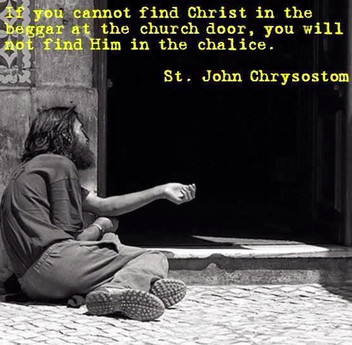 "Therefore welcome one another as Christ has welcomed you, for the glory of God" (Ro 15:7). This is church language. A gathered-church. The context: Some were NOT welcoming others. So the word to church: "welcome those whom you are not welcoming." Negative application: What are our attitudes and actions NOW that communicate "you're unwelcome here" or prohibit the welcome of those we are not welcoming (those not like us/those we hate/those we in-some-way-look-down-upon)? Discover, lament, repent. Positive application: Intentional action that welcomes those unlike us whom we are not currently welcoming. My theology and understanding of the New Testament brings me into places and near people that I, otherwise, probably would not be. Sometimes this scares me, not because I am uncomfortable (and I am often uncomfortable as I should be or I am not learning from my theology and understanding of the New Testament), but because I am empty of solutions or resources or practical-on-the-spot comfort.
Children's message at service yesterday:
Kids, I want to ask you a question (like I usually do), but I want you to pause and really think about your answer. When you walk into a room, into a home, into a party, into any place where there are other people (your age), what's the first thing you ask yourself? Of course I spent a little time explaining what "ask yourself" means because they don't even know they are "asking" anything. Had plenty of puzzled looks for the most part . . . but I knew they'd get it when I told them what I thought their first question to themselves would be . . . I said, "When you walk into a room, into a home, into a party, into any place where there are other people (your age), don't you ask yourself, 'Are my friends here?' (Parents, don't we even ask this?)" You can see their minds work by their eyes and facial expressions. O yeah! Lots of nodding yes. They got it . . . so did the adults . . . Of course I said this is natural and not a bad thing . . . but that can stop us from asking other questions like, who is lonely here, who is not liked and needs a friend, who is uncomfortable here and needs someone to talk to . . . This is what Jesus did for us: he came into the party, knowing full well he didn't have any friends there, and asked, "Who is lost? Who needs a friend?" This is church, people (now I'm not talking to the kids, but you, blog friends). Maturing in Christ means getting beyond "who are my friends?" and "are my friends here?" And this is also about maturing as a church, as a gathered-church. 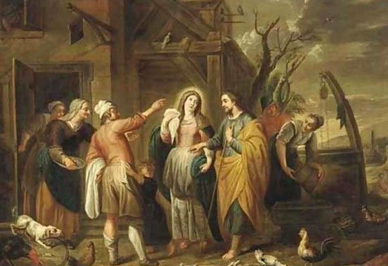 Just saw a rather good tag line in a meme: "Is there room for me in your Christmas?" Yes, I know a cliché, but this time there is valid application. I sure like this Christianese cliché more than the other-ad nausea-one: Jesus is the reason for the season--and here's why: Of course the original Christmas story teaches us somethings about the Christ, the second person of the trinity, the Son of God become flesh (very very important stuff), but these texts are to help us understand the nature of redemption--the gospel--and the purpose of the church. So who we are as church is to be lifted from this story. So, here goes: "We are the reason for the season." Not only did Jesus come to save us (i.e., the reason for the season), but we are Christmas to the dying world. And, I am wondering if all our attempting to follow the retail and commercial world in our presentation of the Christmas story has taken us away from our role in all the gospel. As for the other meme quote, "Is there room for me in your Christmas?" is so relevant a question for the church, the local church. There are so many people (do I really need to list them for you?) that are wondering about just this with regards to our churches. What, really, whom don't we have room for "at church"? Not only has retail highjacked Christmas, in some way the church has as well made retail our bottom-line; making it exactly the same as retail version to grow our churches, up-contributions, and make us feel all warm for this holiday season. Here's the rub: What does our way of "doing church" (and doing Christmas) suggest or teach others for whom we do and do not have room? Think more deeply about Christmas this year. The local church as the “thin place” and “the space between”: “Thin place,” a sacred place or space where unseen mysteries of the other world (i.e., “the heavenlies”) and the material places of the earth touch. A “thin place” is where one can walk in two worlds at the same time, a place of liminality—a place where the two worlds (seen and unseen) are fused or mingled together, yet where distinctions can be discerned. “A thin place” is where the boundary between heaven and earth is especially narrow, a place where a sense of the divine is more readily perceived. The church (a local church) as God’s household-temple is such a “thin place.” The “space between” is the common or transitional space where boundaries are fluid, a mix of human activity, specifically that space between the build environment. The church (a local church) is such a “space between” [from C. M. Anderson, “The Sacred “Thin” Space Between: (Eph 3:16): The Temple- Church as Revelation of God's Reconciling Mystery and Its Potential for Church Growth Outcomes” (paper)].
*This is the third instalment of quotes from my presentation on "Church (local), the poor and their neighborhood," which are focused on applying the Bible, especially in the context of "neighborhood." For all the posted "Church (local) quotes >>
MLK: Judgment of God . . . a disinterested generation of young, disappointed people in the church11/11/2016
|
AuthorChip M. Anderson, advocate for biblical social action; pastor of an urban church plant in the Hill neighborhood of New Haven, CT; husband, father, author, former Greek & NT professor; and, 19 years involved with social action. Archives
February 2024
Categories
All
|
|||||||||||||||||||||||||||||||||||||||||||||||||||||||||||||||||||||||||||||||||||||||||||||
Pages |
More Pages |
|

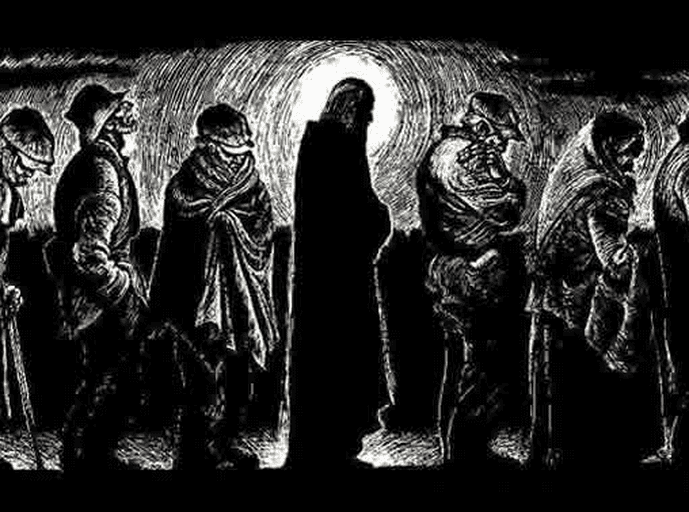
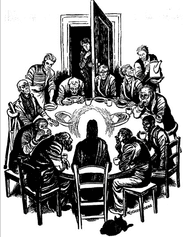



 RSS Feed
RSS Feed